Feng Dang
ForkNet: Simultaneous Time and Time-Frequency Domain Modeling for Speech Enhancement
May 15, 2023Abstract:Previous research in speech enhancement has mostly focused on modeling time or time-frequency domain information alone, with little consideration given to the potential benefits of simultaneously modeling both domains. Since these domains contain complementary information, combining them may improve the performance of the model. In this letter, we propose a new approach to simultaneously model time and time-frequency domain information in a single model. We begin with the DPT-FSNet (causal version) model as a baseline and modify the encoder structure by replacing the original encoder with three separate encoders, each dedicated to modeling time-domain, real-imaginary, and magnitude information, respectively. Additionally, we introduce a feature fusion module both before and after the dual-path processing blocks to better leverage information from the different domains. The outcomes of our experiments reveal that the proposed approach achieves superior performance compared to existing state-of-the-art causal models, while preserving a relatively compact model size and low computational complexity.
THLNet: two-stage heterogeneous lightweight network for monaural speech enhancement
Jan 19, 2023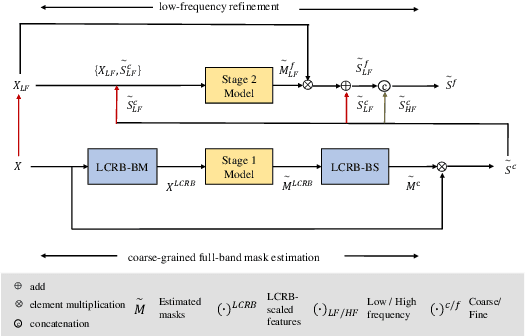
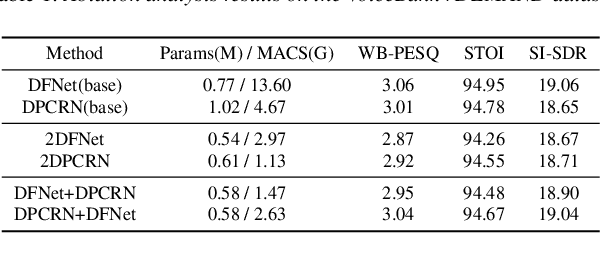
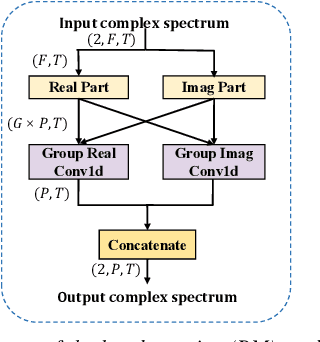
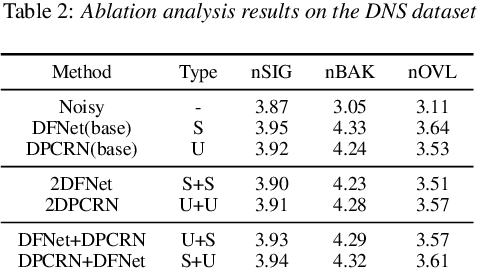
Abstract:In this paper, we propose a two-stage heterogeneous lightweight network for monaural speech enhancement. Specifically, we design a novel two-stage framework consisting of a coarse-grained full-band mask estimation stage and a fine-grained low-frequency refinement stage. Instead of using a hand-designed real-valued filter, we use a novel learnable complex-valued rectangular bandwidth (LCRB) filter bank as an extractor of compact features. Furthermore, considering the respective characteristics of the proposed two-stage task, we used a heterogeneous structure, i.e., a U-shaped subnetwork as the backbone of CoarseNet and a single-scale subnetwork as the backbone of FineNet. We conducted experiments on the VoiceBank + DEMAND and DNS datasets to evaluate the proposed approach. The experimental results show that the proposed method outperforms the current state-of-the-art methods, while maintaining relatively small model size and low computational complexity.
DPT-FSNet:Dual-path Transformer Based Full-band and Sub-band Fusion Network for Speech Enhancement
Apr 27, 2021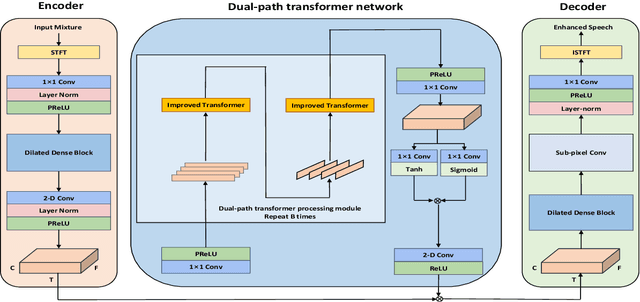


Abstract:Recently, dual-path networks have achieved promising performance due to their ability to model local and global features of the input sequence. However, previous studies are based on simple time-domain features and do not fully investigate the impact of the input features of the dual-path network on the enhancement performance. In this paper, we propose a dual-path transformer-based full-band and sub-band fusion network (DPT-FSNet) for speech enhancement in the frequency domain. The intra and inter parts of the dual-path transformer network in our model can be seen as sub-band and full-band modeling respectively, which have stronger interpretability as well as more information compared to the features utilized by the time-domain transformer. We conducted experiments on the Voice Bank + DEMAND dataset to evaluate the proposed method. Experimental results show that the proposed method outperforms the current state-of-the-arts in terms of PESQ, STOI, CSIG, COVL. (The PESQ, STOI, CSIG, and COVL scores on the Voice Bank + DEMAND dataset were 3.30, 0.95, 4.51, and 3.94, respectively).
 Add to Chrome
Add to Chrome Add to Firefox
Add to Firefox Add to Edge
Add to Edge